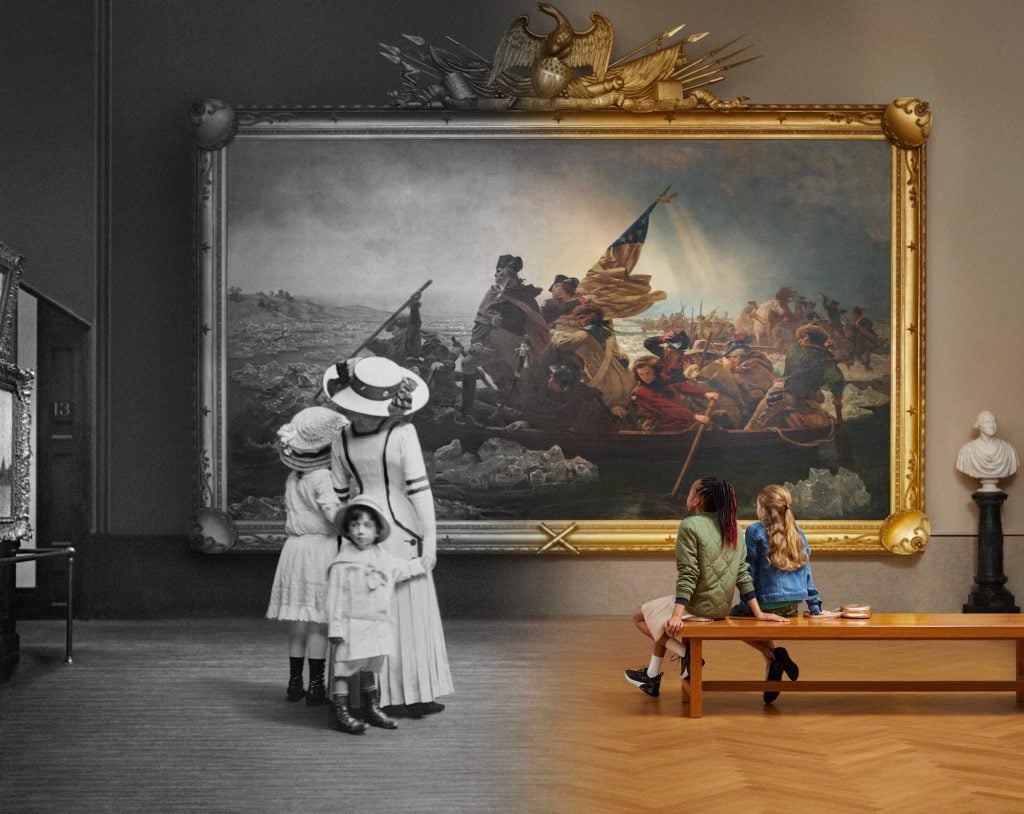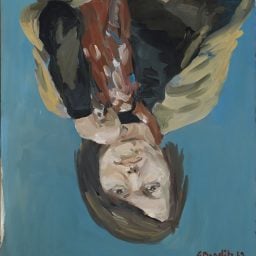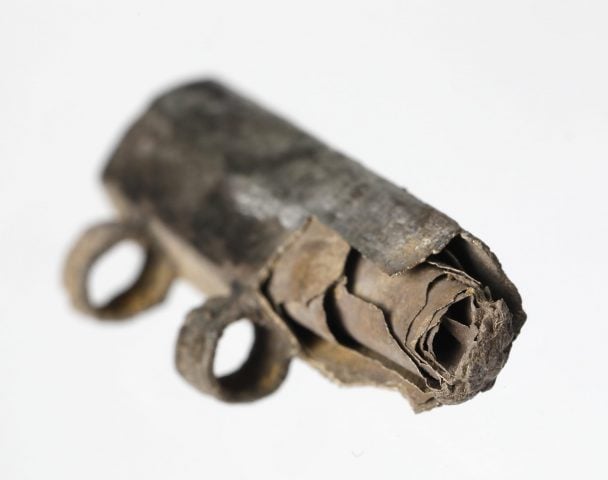Summing up the 150-year history of the Metropolitan Museum of Art is no easy task, but that’s exactly what Andrea Bayer was assigned to do for the institution’s sesquicentennial anniversary exhibition,”Making the Met, 1870–2020.”
The show “concentrates on what we considered transformative moments that changed the DNA of the museum,” Bayer, the museum’s deputy director for collections and administration, told Artnet News.
The exhibition centers around 10 turning points in the museum’s history, ranging chronologically from the earliest acquisitions that form the foundation’s of the Met’s encyclopedic collection to major gifts and curatorial initiatives. It leaves off at another watershed moment: the New York City lockdown that has shuttered the museum since March.
The show, which was originally supposed to open this spring, has been rescheduled for August 29, permitting government regulations allow.
“We’re going to look at this exhibition through new and different eyes now,” Bayer said. “We give you 10 moments, but we’re living in the 11th. This has made us reflect on who we are, where we are, and where we are going.”
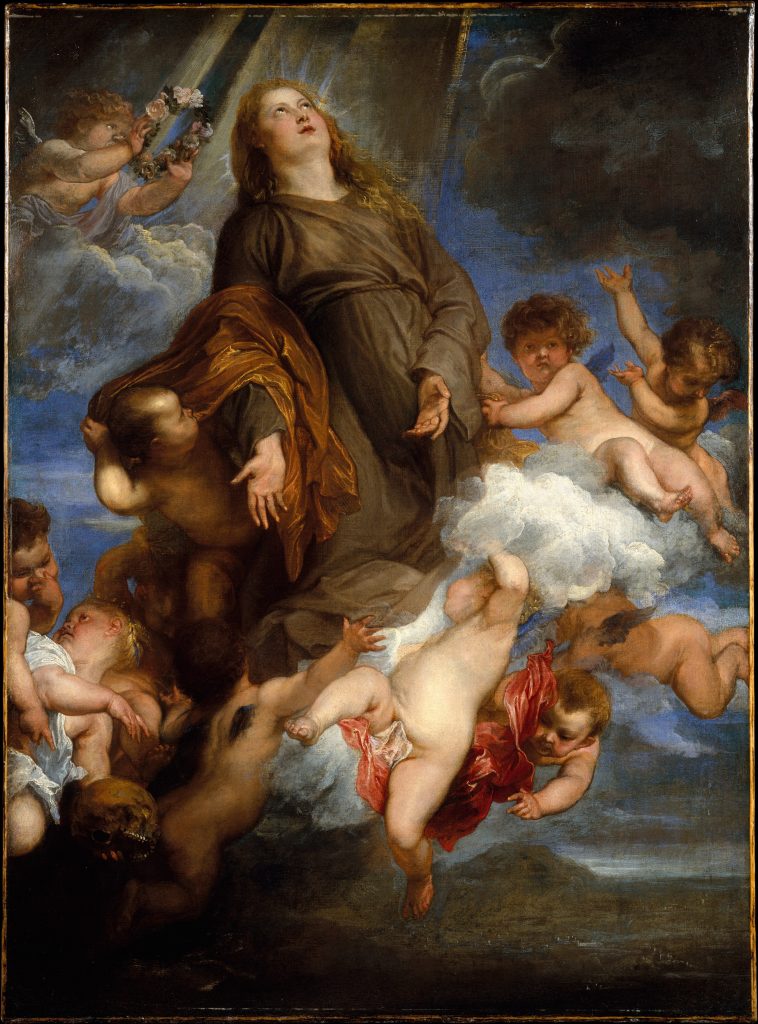
Anthony van Dyck, Saint Rosalie Interceding for the Plague-stricken of Palermo (1624). The painting was one of the Met’s inaugural 1871 purchases. Courtesy of the Metropolitan Museum of Art.
A year after the museum’s founding, in 1870, came its initial purchase, courtesy of New Yorkers who traveled to Europe with an eye toward finding paintings and other works for the fledgling institution.
“We started at the moment the museum had nothing—no art, no building, no staff,” said Bayer.
Among those very first acquisitions was Anthony van Dyck’s painting Saint Rosalie Interceding for the Plague-stricken of Palermo (1624).
“It’s a plague picture,” Bayer said. “Van Dyck was in Palermo when the city was struck by plague. The body of St. Rosalie was rediscovered at that time and brought through the city. People were praying to her.”
The painting was among the works in the show that were installed prior to the shutdown, and has hung in the darkened galleries all these months, visible only to the few staff members who have continued to work on site.
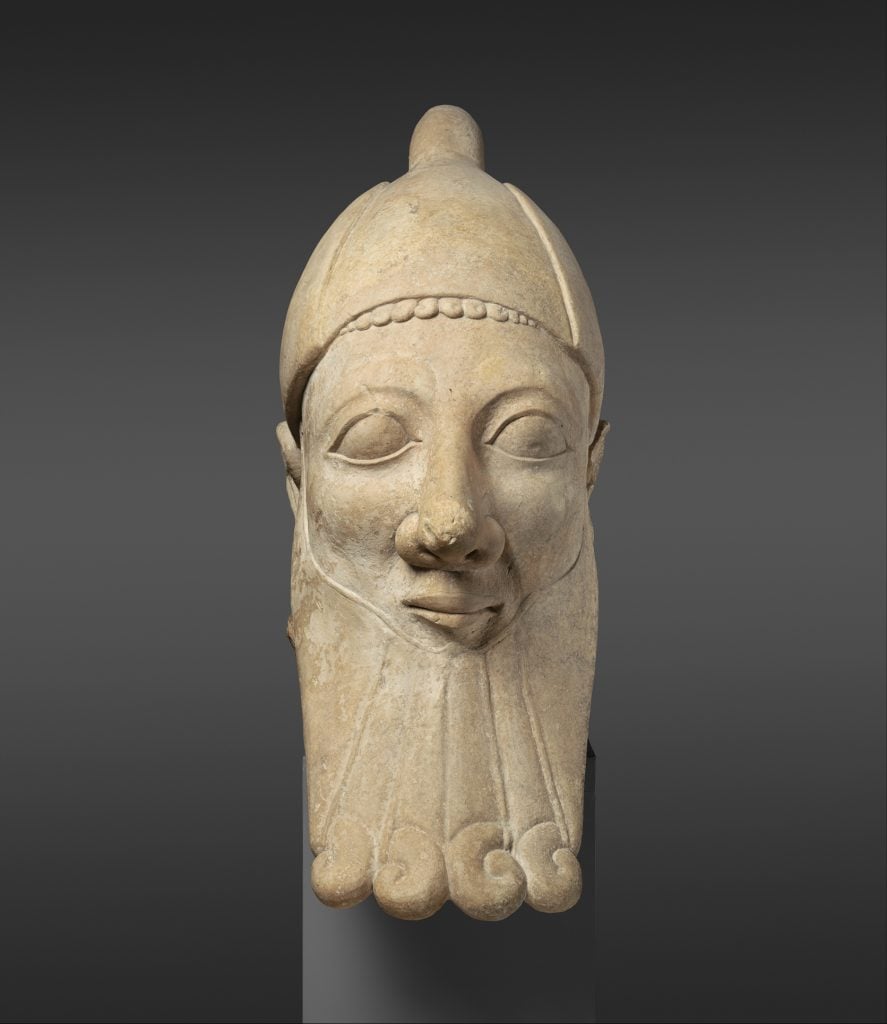
Limestone head of a bearded man, Cypriot (early 6th century BC). Photo courtesy of the Metropolitan Museum, the Cesnola Collection, Purchased by subscription, 1874–76.
“It has been there as a little bit of an icon of the exhibition as a hopeful work that gets us through to the other side of this,” Bayer said. “All of a sudden, this work had an additional resonance.”
The Met’s early years are also represented in “The Founding Decades,” a section that opens the show with a sixth century limestone head from Cyprus. The work is part of the Cesnola collection, amassed by the museum’s first director, Luigi Palma di Cesnola, an Italian general who had been in charge of archaeological work on the Mediterranean island.
“He excavated thousands and thousands of Cypriot objects,” Bayer said. Those findings became the basis for the Met’s renowned antiquities collection.
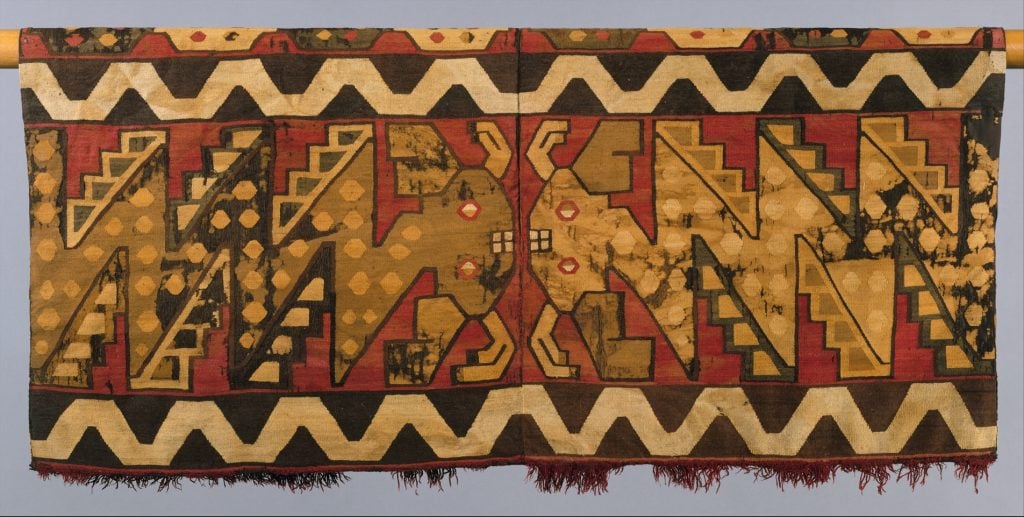
Tunic with Confronting Catfish, Nasca-Wari (800–850 AD). Courtesy of the Metropolitan Museum, gift of George D. Pratt, 1929.
In the early 20th century, portions of the museum’s collection, including textiles, musical instruments, and works on paper, were presented in study rooms that were open to all visitors.
Bayer revisits this moment in the museum’s history in a section of the exhibition called “Art for All.” Founding curator William Ivins acquired prints by masters such as Edouard Vuillard and Albrecht Dürer while simultaneously expanding the museum’s definition of art.
“He wanted to show the entire history of works of art printed on paper. He would say, ‘from the most ephemeral to the loftiest pictorial presentations.’ He wanted them both, he wanted the whole range,” Bayer said. “Sheets of wallpaper are part of our collection. Valentines, seed packets, baseball cards—they were all equally interesting to William Ivins.”
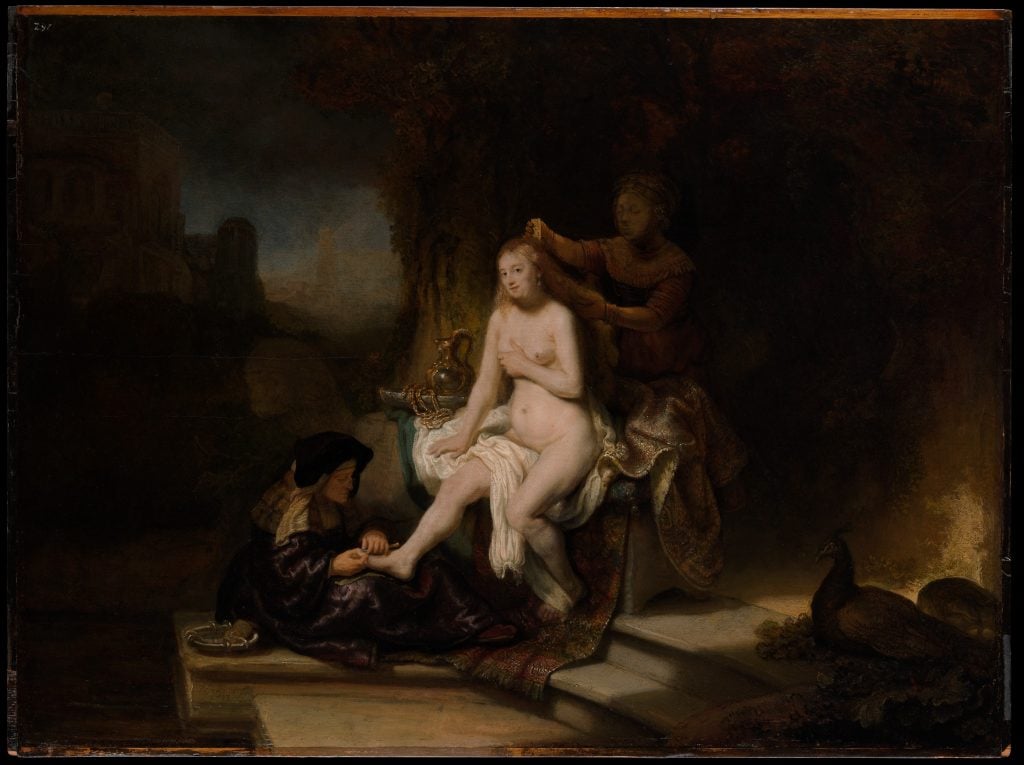
Rembrandt van Rijn, The Toilet of Bathsheba (1643). Courtesy of the Metropolitan Museum of Art, bequest of Benjamin Altman.
On the flip side, the turn of the century also saw the Met honing its “Princely Aspirations,” as Bayer has dubbed the show’s next area of focus. “A group of trustees led by J. Pierpont Morgan were interested in making the museum a treasure house,” Bayer said. “They wanted to present the Met as a place where the great treasures of the world were housed.”
Helping achieve that goal was a bequest from department store magnate Benjamin Altman, which included an important collection of Dutch Golden Age works including Rembrandt van Rijn’s The Toilet of Bathsheba.
It’s a painting that Bayer has included here not only because it’s a well-known masterpiece, but because it also serves as “an example of how we never stop studying our works of art,” she said. “It’s a subject from the Bible. King David is actually spying on Bathsheba, but behind her is a woman of African descent. Recently, we’ve made great headway in studying depictions of people of African descent in our European painting collections, and elsewhere.”
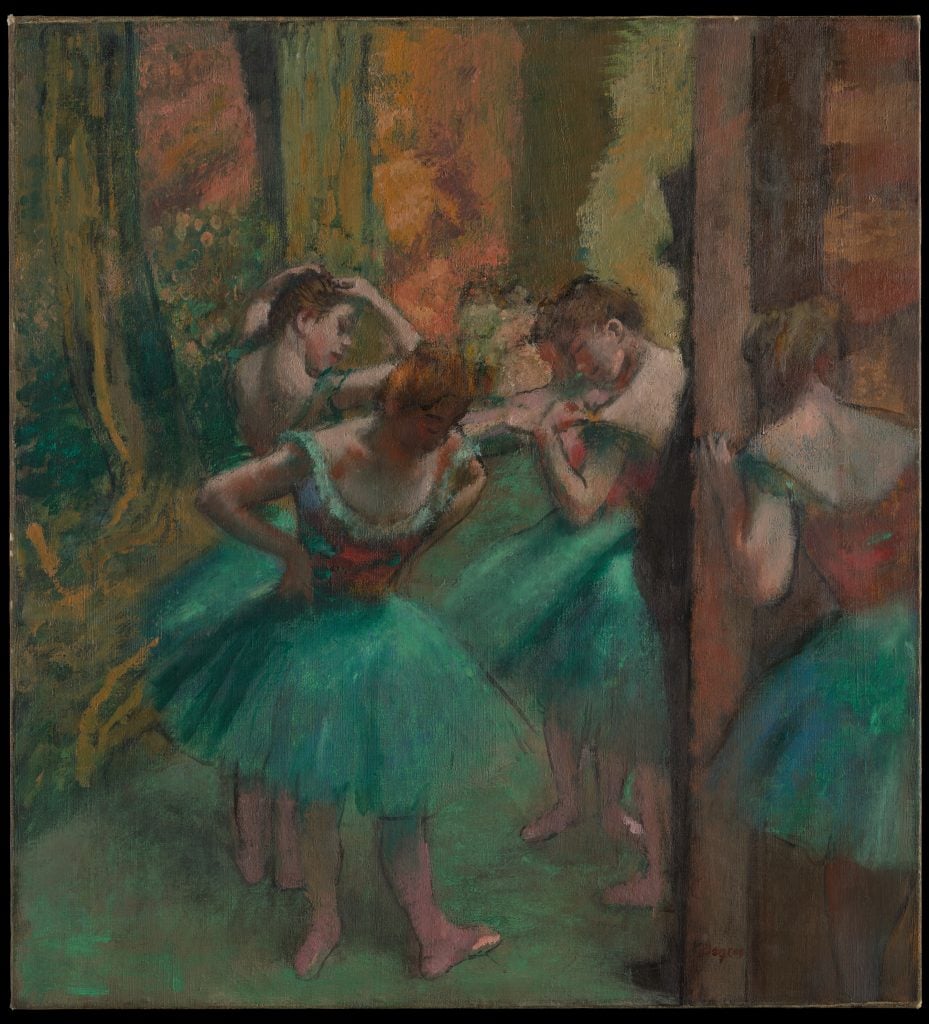
Edgar Degas, Dancers, Pink and Green (circa 1890). Courtesy of the Metropolitan Museum of Art, H.O. Havemeyer Collection, bequest of Mrs. HO Havemeyer, 1929.
Such important gifts continued throughout the 20th century. The Impressionist department got a major boost from Louisine Havemeyer, who with her husband, H.O. Havemeyer, collected 112 works by Edgar Degas, as well as other Impressionist works of art, American glassware, and Asian art.
“They were two individuals whose vision completely changed the museum,” Bayer said. And then there was Charles and Jayne Wrightsman, whose gift “transformed three different departments: European sculpture and decorative art, European paintings, drawings, and prints—and her bequests to the Costume Institute were also very, very important.”
Conducting archaeological dugs was another key way that the museum increased its holdings. The Met’s first excavation was in 1906 and its work on dig sites continues today, but in concert with host countries where the unearthed antiquities remain.
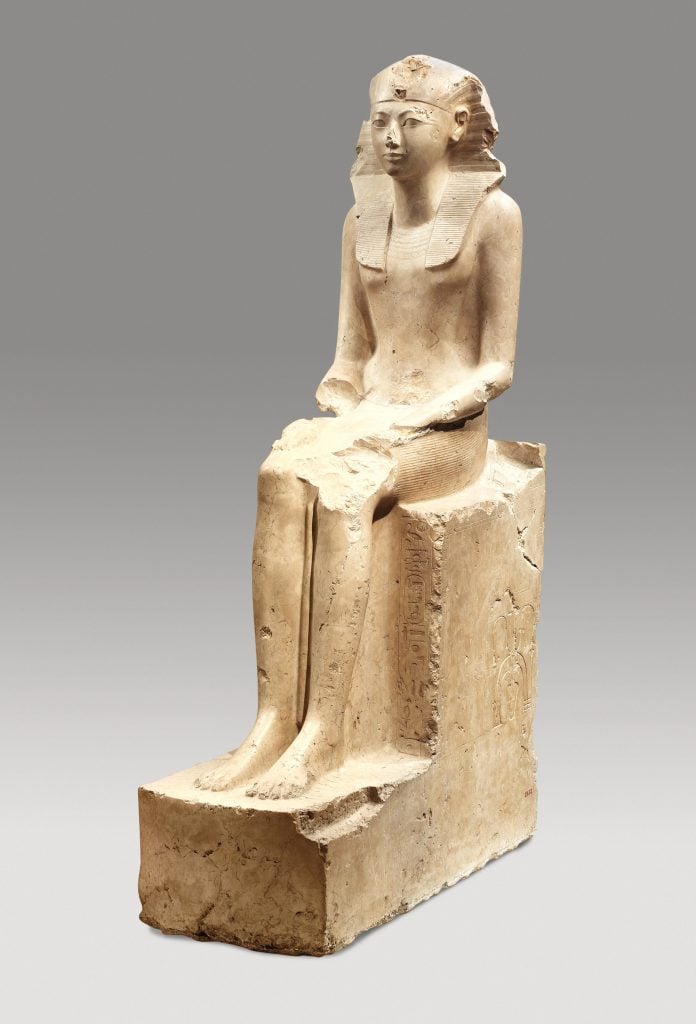
Seated Statue of Hatshepsut (1479–1458 BC), Egyptian. Photo courtesy of the Metropolitan Museum of Art, Rogers Fund, 1929.
Standing sentinel over the exhibition, at the end of the long hallway that connects all the galleries, is a monumental Egyptian statue, Seated Statue of Hatshepsut (circa 1479–1458 BC).
“It’s in front of a window that we’ve opened for the first time in about 25 years that looks out over Central Park. Right behind Hatshepsut is the great Central Park Obelisk,” Bayer said. “In a remarkable turn of fate, the obelisk was raised by her co-ruler, the man who took over after she died and damaged and destroyed her sculptures whenever he could. They had a pretty fraught relationship, and here they are they sitting together in Central Park.”
Another major component of the Met’s legacy is its efforts to help construct a national narrative about American art, celebrating both the nation’s painters and also the craftsmen responsible for its decorative arts.
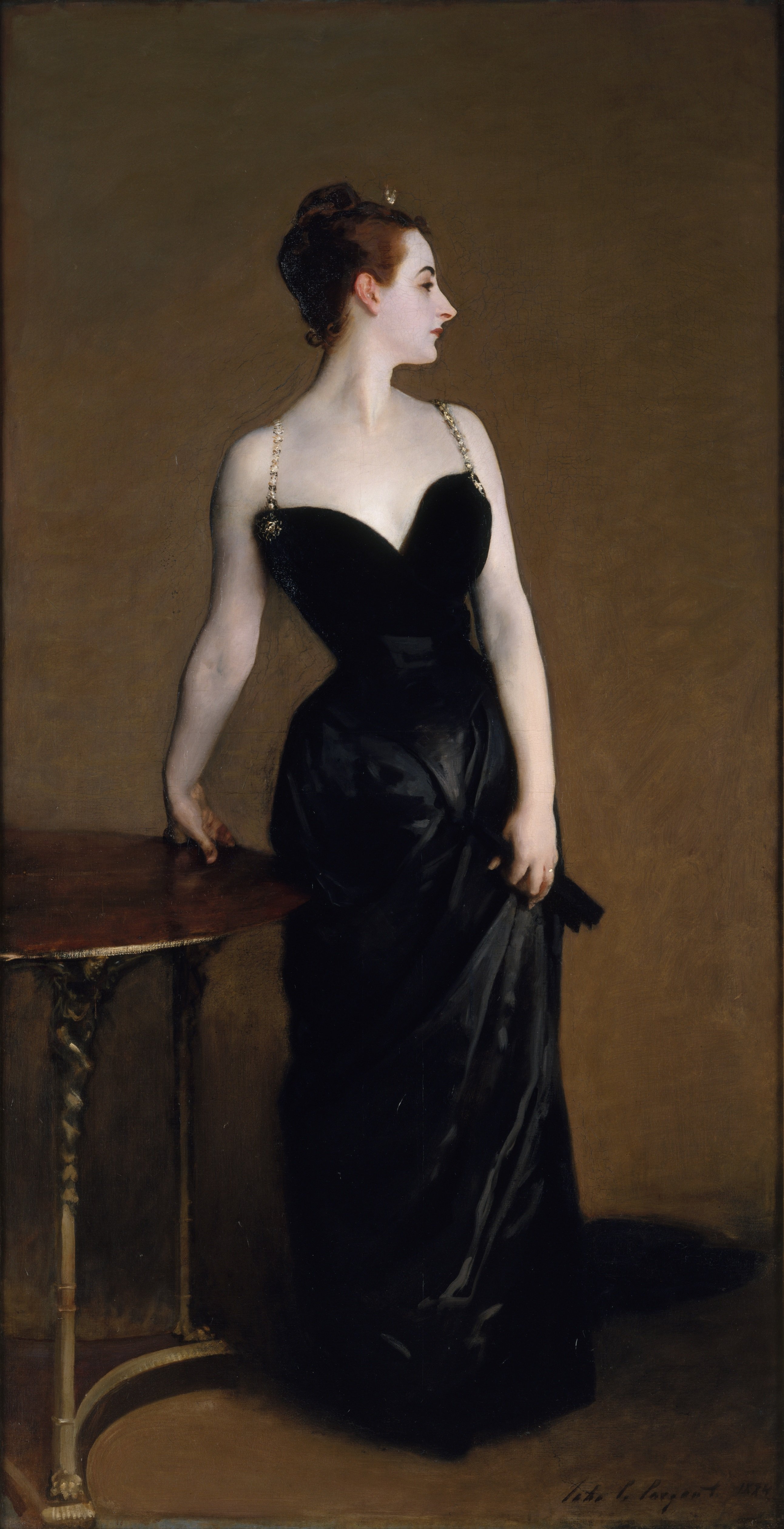
John Singer Sargent, Madame X (Madame Pierre Gautreau) 1883–84. Courtesy of the Metropolitan Museum of Art, Arthur Hoppock Hearn Fund, 1916.
“American artists were extremely keen to get their works into the museum and were always involved in the museum, sometimes quite intimately,” said Bayer, referring to John Singer Sargent, who sold his masterpiece Madame X to the Met “at an extremely good price, directly from him, calling it the best work he had ever done.” (Sargent also might have lowered the price because the work, which originally showed the sitter with one strap falling off her shoulder, was hugely scandalous when it debuted in Europe.)
On the other hand, the Met has had some catching up to do in terms of its collection of Modernist art. “The museum was quite conservative about avant-garde painting and sculpture,” said Bayer. “It is our great good fortune that Leonard Lauder, seeing that we missed the original collecting of Cubism, has made a promised gift of his collection of Cubist works of art.”
The show will debut Lauder’s most recent donation, Pablo Picasso’s Woman in a Chemise in an Armchair.
To end the show, the exhibition examines how the Met has been working to broaden its perspectives in recent decades. As one example, Bayer has selected a Faith Ringgold quilt purchased for the collection by curator Lowery Stokes Sims in 1990.
“Lowery was carefully, and with a very discerning eye, buying works by women, by artists of color, by Indigenous artists, and bringing them into the Modern and contemporary wing,” said Bayer. “We end the exhibition thinking about all the new directions in which we can still go. [Met director] Max Hollein is very interested in cross-cultural initiatives, things that break down barriers geographically, chronologically, and so on.”
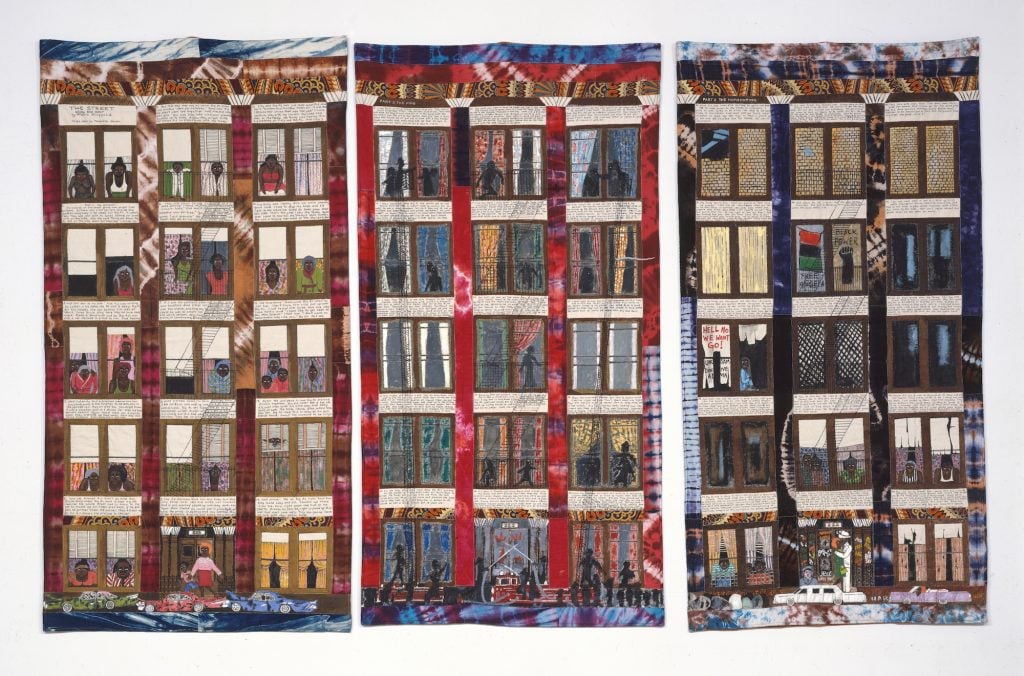
Faith Ringgold, Street Story Quilt (1985). Photo courtesy of the Metropolitan Museum of Art, Arthur Hoppock Hearn Fund and funds from various donors 1990.
Bayer also hopes viewers will consider this look at the museum’s first 150 years through the lens of the present moment.
“The museum has never been closed in this way before. We’ve had to shut down for five months, and the nation is involved in an important and fundamental struggle for racial justice,” said Bayer. “As people come through, especially New Yorkers, we think that this is going to be very important to them. It will bring solace to see all these beautiful works of art. We hope they will come again and again to take in each of these stories and to think about them, and where we are right now.”
See more works from the exhibition below.
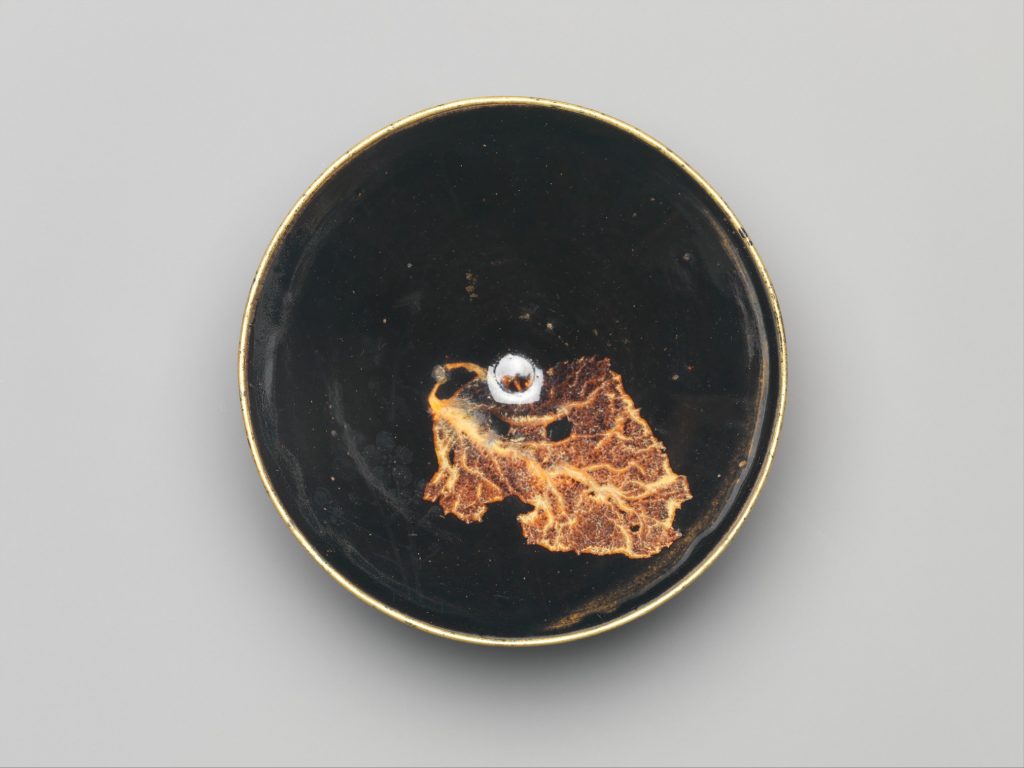
Tea Bowl with Leaf Decoration (12th–13th century), China. Photo courtesy of the Metropolitan Museum of Art, H.O. Havemeyer Collection, Bequest of Mrs. H.O. Havemeyer, 1929.
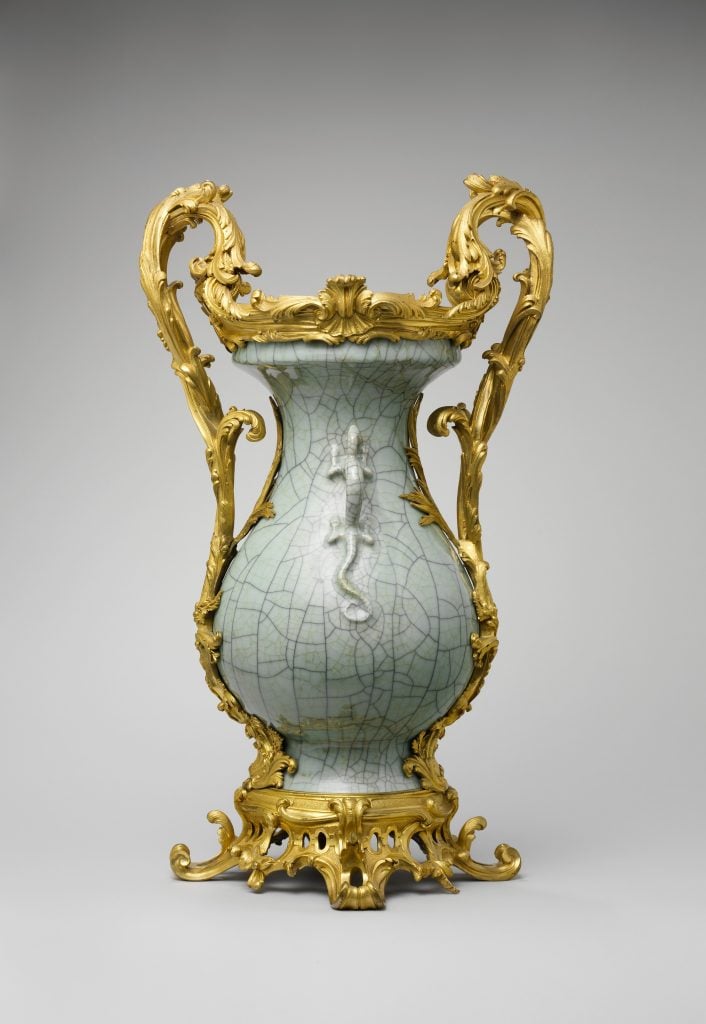
Mounted porcelain vase, Chinese with French mounts (early 18th century). Photo courtesy of the Metropolitan Museum of Art, gift of Mr. and Mrs. Charles Wrightsman, 1971.
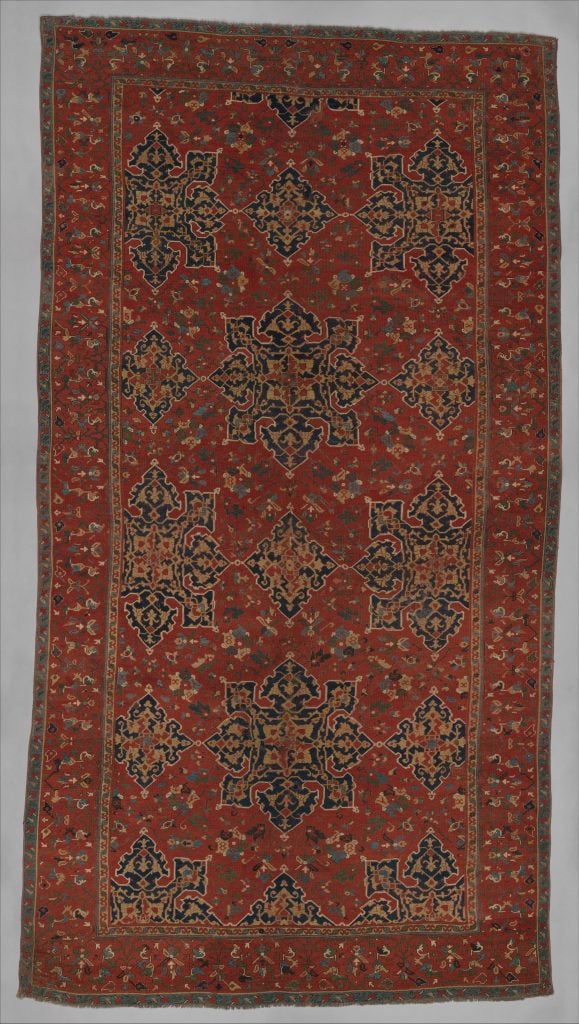
Star Ushak Carpet (late 15th century), Islamic. Photo courtesy of the Metropolitan Museum of Art, Gift of Joseph V McMullan, 1958.
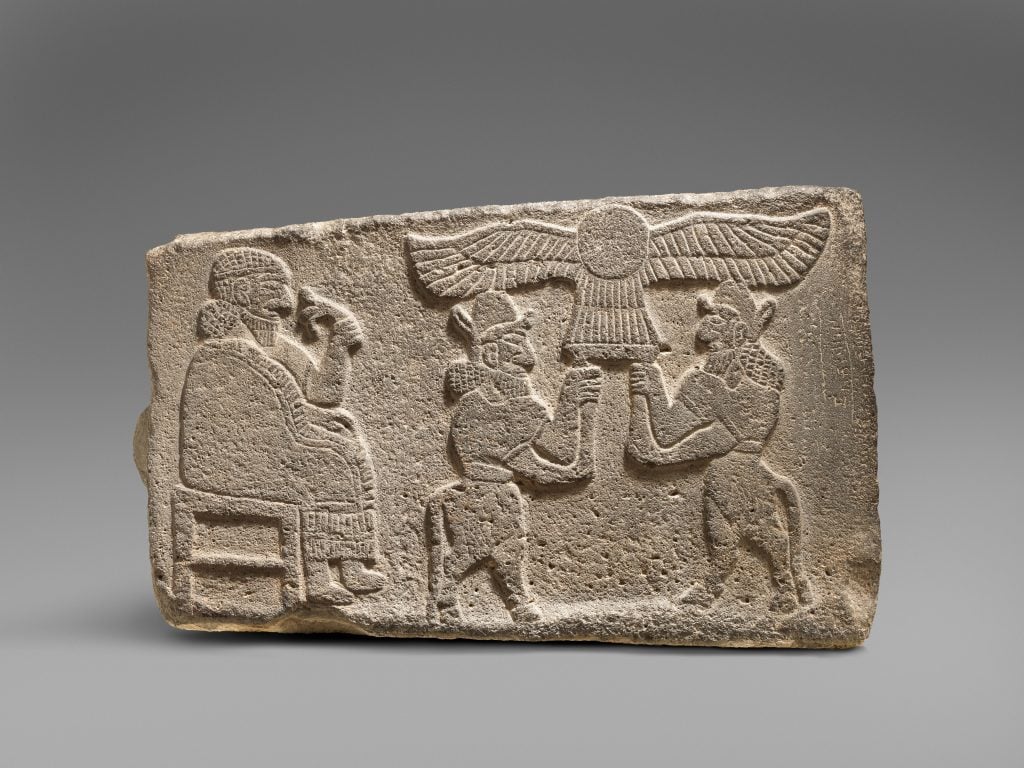
Orthostat relief, seated figure holding a lotus flower (circa 10th–9th century BC. Photo courtesy of the Metropolitan Museum of Art, Rogers Fund, 1943.
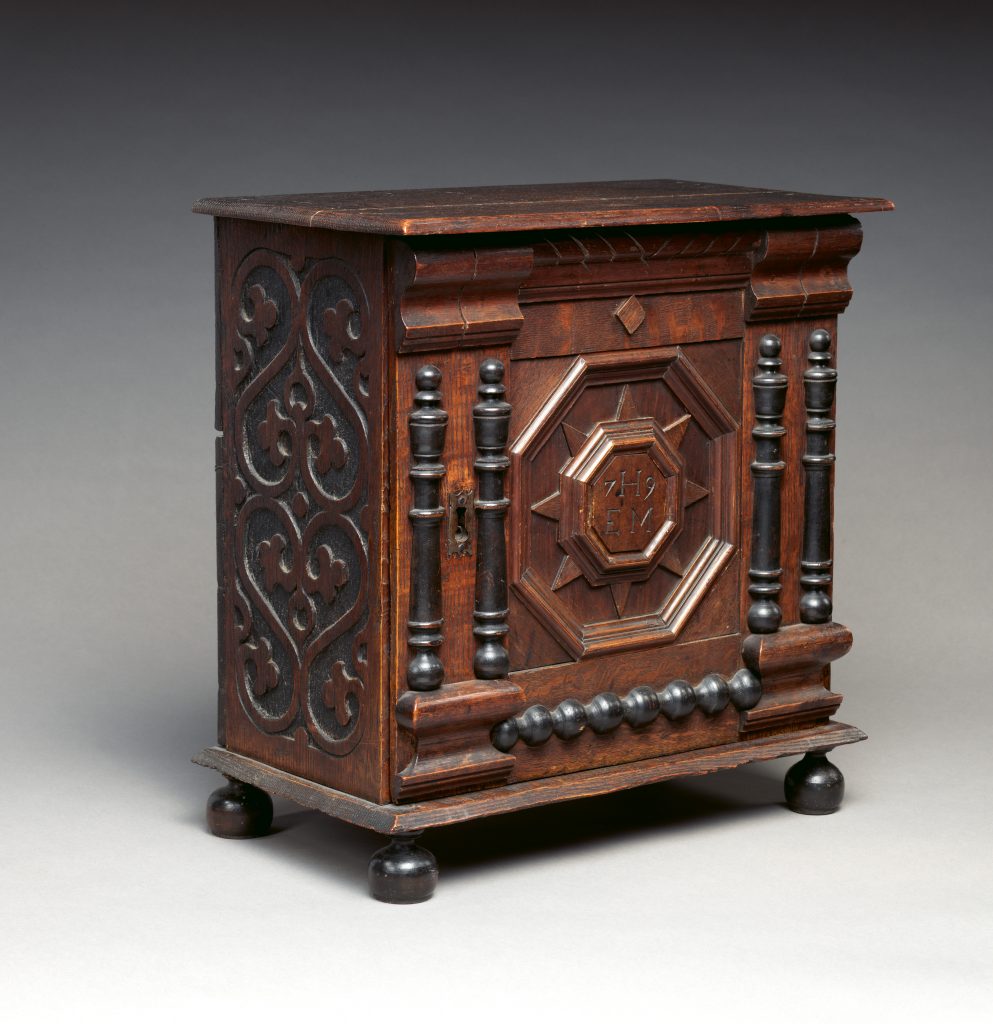
American cabinet (1679). Photo courtesy of the Metropolitan Museum of Art, Gift of Mrs Russell Sage, 1909.
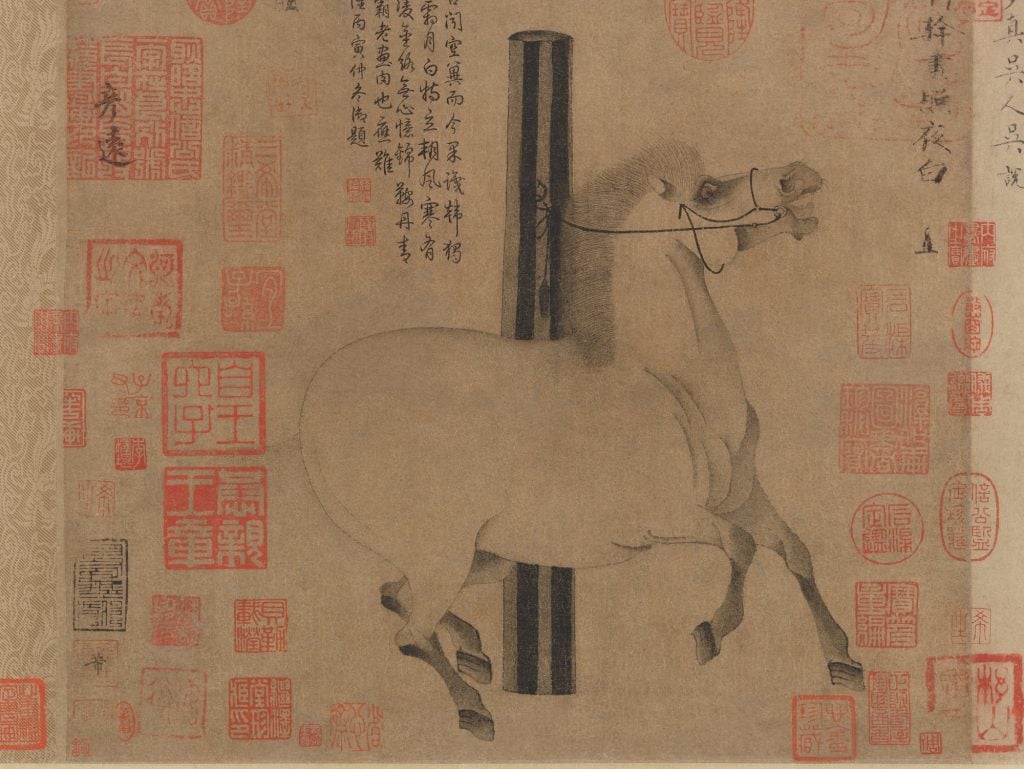
Han Gan, Night-Shining White (circa 750, Tang dynasty). Courtesy of the Metropolitan Museum of Art, New York, purchase, the Dillon Fund Gift, 1977.
“Making the Met, 1870–2020” will be on view at the Metropolitan Museum of Art, 1000 Fifth Avenue, New York, NY, August 29, 2020–January 3, 2021.
